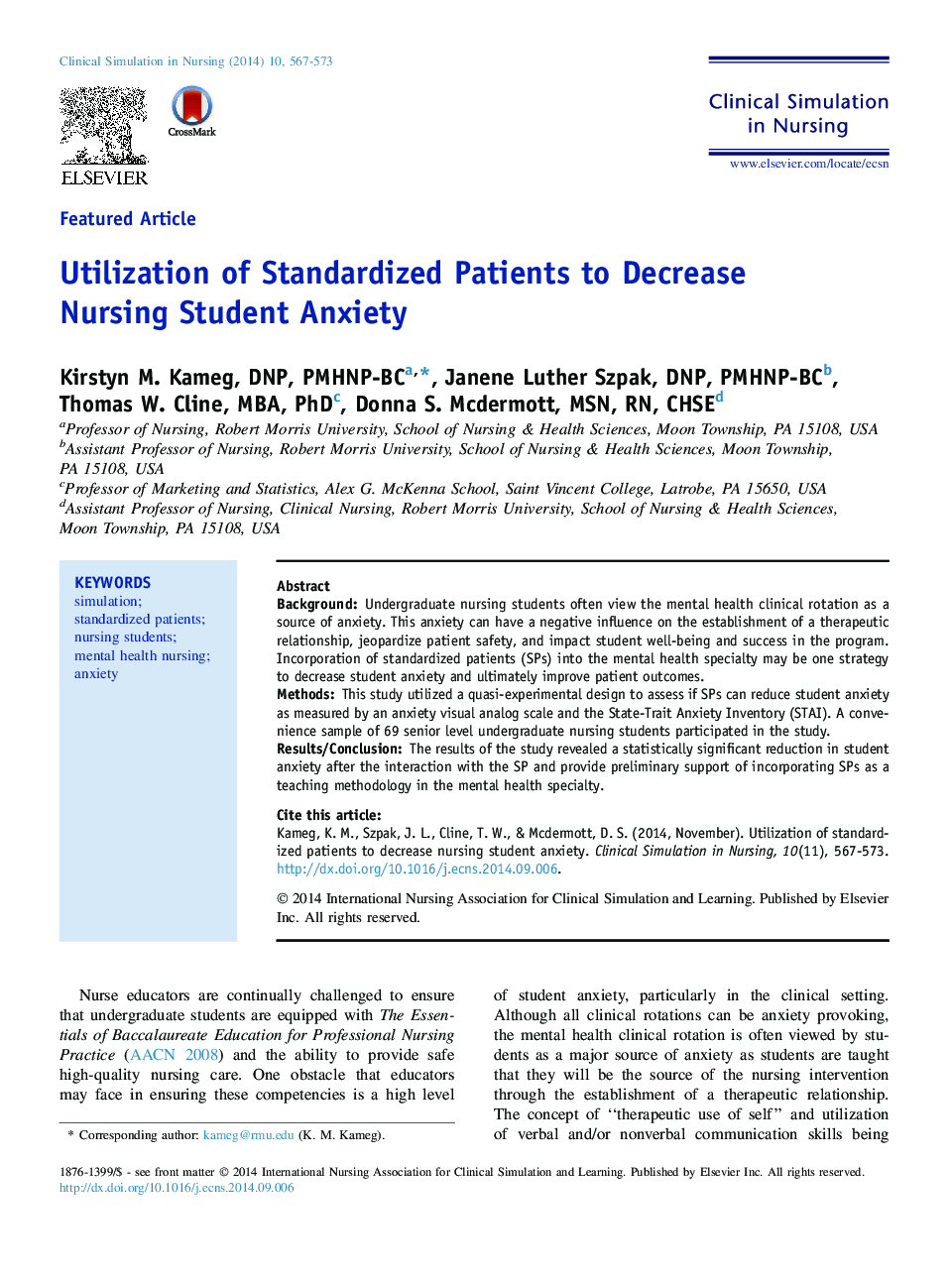| کد مقاله | کد نشریه | سال انتشار | مقاله انگلیسی | نسخه تمام متن |
|---|---|---|---|---|
| 2646445 | 1138865 | 2014 | 7 صفحه PDF | دانلود رایگان |
• Nursing student anxiety can have a negative influence on the establishment of a therapeutic relationship, jeopardize patient safety, and impact student well-being and success in the program.
• Decreasing student anxiety can assist in improving the therapeutic nurse–patient relationship and ultimately enhancing patient outcomes.
• Simulation with the use of standardized patients can be utilized in the mental health nursing specialty to decrease undergraduate nursing student anxiety.
BackgroundUndergraduate nursing students often view the mental health clinical rotation as a source of anxiety. This anxiety can have a negative influence on the establishment of a therapeutic relationship, jeopardize patient safety, and impact student well-being and success in the program. Incorporation of standardized patients (SPs) into the mental health specialty may be one strategy to decrease student anxiety and ultimately improve patient outcomes.MethodsThis study utilized a quasi-experimental design to assess if SPs can reduce student anxiety as measured by an anxiety visual analog scale and the State-Trait Anxiety Inventory (STAI). A convenience sample of 69 senior level undergraduate nursing students participated in the study.Results/ConclusionThe results of the study revealed a statistically significant reduction in student anxiety after the interaction with the SP and provide preliminary support of incorporating SPs as a teaching methodology in the mental health specialty.
Journal: Clinical Simulation in Nursing - Volume 10, Issue 11, November 2014, Pages 567–573
